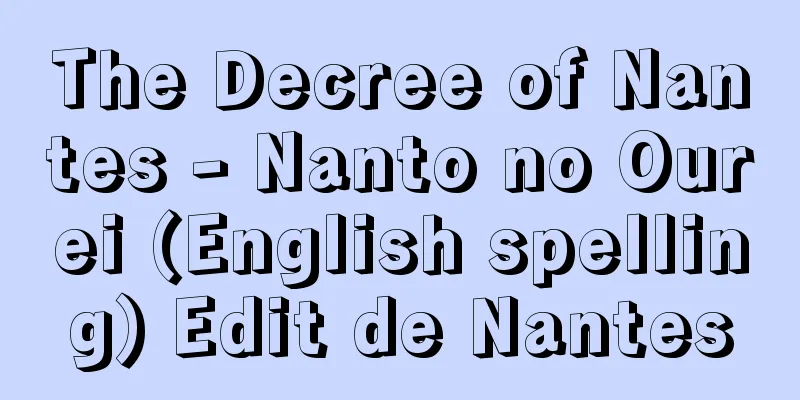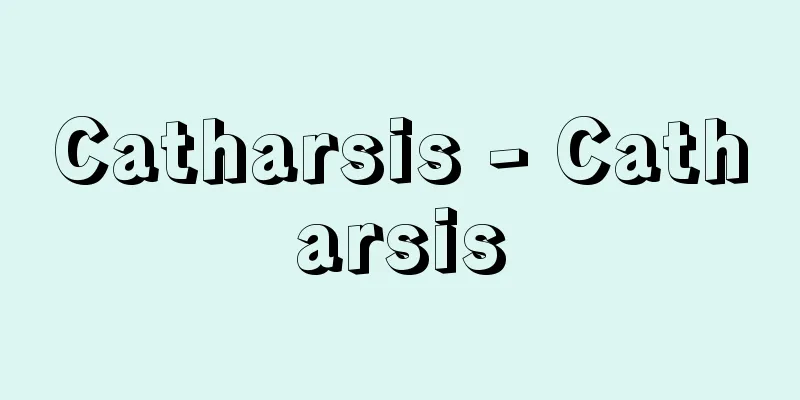The Decree of Nantes - Nanto no Ourei (English spelling) Edit de Nantes

|
A royal decree issued by King Henry IV in April 1598 in Nantes, a city in western France. It is also called the Edict of Nantes. It sought to restore peace in the country by legally allowing the coexistence of Catholicism and Protestantism, the two spiritual, theoretical, and traditional beliefs of the French Wars of Religion. The decree itself was not new, and was a successor to the Edict of Toleration issued by Catherine de Medici and Henry III, but it was made permanent and irrevocable. It was considered a charter of rights and privileges for French Huguenots (Protestants), and freedom of worship in designated places was also recognized, heralding the beginning of the era of tolerance. Even if the peace that followed was unreliable, it cannot be denied that it was a powerful contribution to the restoration of the authority of the French king. In the 17th century, Richelieu and Mazarin, while utilizing the centralized principle of the Edict of Nantes, tried to break down the political privileges of the Huguenots, and in 1685 Louis XIV revoked the decree. [Yoshio Shigaki] Source: Shogakukan Encyclopedia Nipponica About Encyclopedia Nipponica Information | Legend |
|
1598年4月、フランス西部の都市ナントでアンリ4世によって公布された王令。ナントの勅令ともいう。フランス宗教戦争時代の二つの精神・理論・伝統であるカトリックとプロテスタントとの信仰を合法的に共存させて国内の平和回復を求めたもの。王令それ自体は目新しいものではなく、カトリーヌ・ド・メディシスやアンリ3世が公布した寛容王令を受け継いでいたが、永続的かつ取消しのできないものとされた。フランス・ユグノー(プロテスタント)の権利と特典の憲章とみなされ、定められた場所での礼拝の自由も認められて、寛容時代の開幕を告げることとなった。その後の平和が心もとないものであったにしても、フランス国王の権威の回復にあずかって力があったことは否定できない。17世紀に入ってリシュリューやマザランは、ナントの王令を中央集権的原理に生かしつつ、ユグノーの政治的特権の打破に努め、1685年にはルイ14世がこの王令を撤回することになる。 [志垣嘉夫] 出典 小学館 日本大百科全書(ニッポニカ)日本大百科全書(ニッポニカ)について 情報 | 凡例 |
<<: Nanto Hokurei - What a place
>>: Nanto Seven Great Temples - Nanto Seven Great Temples
Recommend
Bukemyoumokusho (An extract of the names of warriors)
This book provides a comprehensive commentary on ...
Haematopinus
…Eskimos often eat them raw. The family Haematopi...
Drawing card - Hikifuda
A form of advertising in the Edo period. It is eq...
Kyodo Mountain Cave - Kyodosan Cave
This is a Northern Qi dynasty (550-577) rock-cut ...
Itorakkyo - Itorakkyo
...Distributed from the southern part of the Toho...
verre églomisé (English spelling) verreeglomise
… A distinctive technique is the gilding techniqu...
Shosoin - Shosoin
In the Nara period, the main storehouses were cal...
Yoshiya Uemura
⇒ Yoshiya Kamimura Kichiya ⇒ Yoshiya Source: About...
Fukuoka Nichi Nichi Shimbun - Fukuoka Nichi Nichi Shimbun
The predecessor of the Nishinippon Shimbun, this w...
Karistan - Karistan
...Also, the overwhelming majority of farmers in ...
Acoustic quantum
⇒Phonon Source: About Shogakukan Digital Daijisen ...
aerated concrete
...For this reason, when concrete is poured in co...
Scuola Palatina (English name)
...It is what is called the "Godescalc"...
Intermetallic Compounds - Intermetallic Compounds
A compound formed only from two or more metallic ...
Comité International des Poids et Measurements (English)
…Historical achievements include the discovery of...









